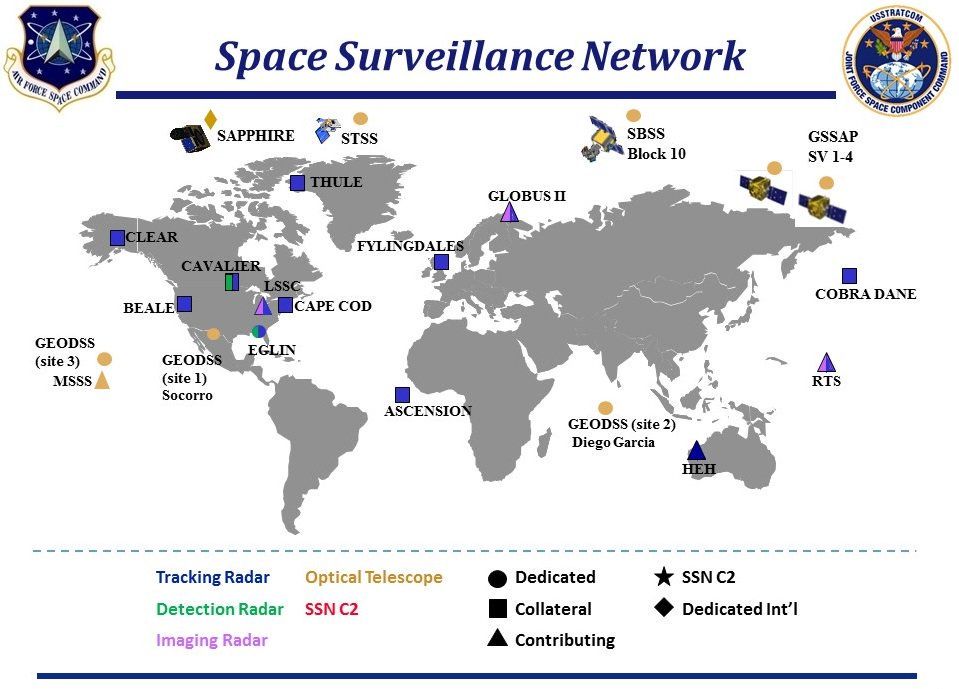The Space Domain Awareness Definition You Wish You Had
Many definitions focus on means and methods, rather than supporting understanding and decision-making. Here, a more nuanced definition is offered.

The term 'Space Domain Awareness' has been bandied with increasing frequency ever since Gen. Shaw announced adoption of the term for United States space operations in 2019. While the Space Domain Awareness had been extensively discussed in research and development literature, Gen. Shaw's announcement coincided with standing up the United States Space Force (USSF). There are a variety of definitions for Space Domain Awareness (including one in USSF Doctrine, pg. 34), many focus on means and methods, rather than its purpose and role in supporting understanding and decision-making. Here, a more nuanced definition is offered. So, what is Space Domain Awareness?
Space Domain Awareness (SDA) includes detection, tracking, characterization, and understanding of objects and actors within and acting upon the space domain now, in the past, and in the future. The purpose of SDA is to enable timely, quality decision-making at the tactical, operational, and strategic levels for all instruments of national power.
To unpack this definition, we need to discuss 1) what the space domain is, 2) why and how to perform detection, tracking, and characterization, 3) what do we mean by understanding, and finally, 4) how understanding helps decision-making.
1) The Space Domain
The Space Domain, most often referred to as 'space' and poetically called the final frontier, silent sea, new wine-dark sea, or void, refers to the volume of space beyond the Von Karman line, 100km above the surface of the Earth.
The Space Domain is a field upon which National Spacepower is exercised, and space development occurs; it is a resource on scientific, economic, and security levels. The Space Domain is conceptually similar to the Maritime Domain, Air Domain, Cyber Domain, and others.
In the present, most activities in the Space Domain involve commercial vehicles / constellations and exploration missions, while in the past most spacecraft were organs of national security for space-faring nations. Increased commercial and exploration endeavors are increasing the importance of space as a domain in the pursuit of national prosperity and security.
Because space is increasingly congested, contested, and competitive, it is necessary to maintain awareness of what is happening in the Space Domain. Underscoring increased prominence of the space domain to national prosperity and security, in 2021 the United States Joint Force defined the Space Area of Responsibility (Space AOR), elevating the Space Domain to a combatant command.
2) Detection, Tracking, and Characterization
Sensors and phenomenologies of all varieties are used to both detect and track objects in space. Radio frequency (RF) and electro-optical (EO) are common phenomenologies, and include radar, telescopes, communications dishes (for communications ranging), and many other systems. These sensors can be terrestrially located or placed within the space domain. Space Domain Awareness endeavors to catalog objects in space and discover previously unknown objects through search activities. In the cislunar regime and above, Space Domain Awareness interacts with Planetary Defense efforts against asteroid impacts.

Once an object has been detected and tracked, those same sensors and phenomenologies may be leveraged to learn about them - to characterize the space objects.
Characterization is a broad activity that includes any and all signal exploitation to learn about space object properties or the space object's automated or human operators. At a minimum, this includes orbital trajectory, whether the object is active, debris, or natural (i.e. an asteroid), and can also include other characteristics such as shape, materials, mission(s), behavior, and operator intentions. According to the USSF, Space Domain Awareness also includes:
"[M]ission related details such as (S/C) missions, intentions, system capabilities, patterns-of-life, and the status of consumables and expendables." (pg. 39, Spacepower - Doctrine for Space Forces)
and
"[...Inferring] patterns, trends, and associations, especially related to human behavior and interactions [...]." (pg. 39, Spacepower - Doctrine for Space Forces)
Characterization does not just include the physical characteristics of a spacecraft - it includes identifying operational patterns, intentions, and thought processes of the individual or machine operating the spacecraft.
Fundamentally, characterization is a process of asking and answering questions about the actor in question. A separate article on Knowledge Production focuses on this process in greater detail.
Operationally, this long list of objectives manifests in tension when allocating limited resources to Space Domain Awareness search, detection & tracking, and characterization efforts.
3) Understanding the Space Domain
Collecting information for Space Domain Awareness is insufficient to enable high-quality and timely decisions. A human or machine operator must understand the available data or information before decisions can be rendered.
"The United States Space Force must have the ability to collect, synthesize, fuse, and make sense of extremely large volumes of data from all sources [...]" (pg. 39, Spacepower - Doctrine for Space Forces, bold added)
To internalize this step, it can be helpful to borrow the USSF descriptions of elements that together compose the Space Domain - the Physical, Network, and Cognitive Dimensions.
Succinctly, the Physical Dimension encompasses all actual physical space as well as platforms, operations centers, infrastructure, and other equipment residing in it. The Network Dimension includes network topologies, their redundancies, chokepoints, and bandwidths. Finally, the Cognitive Dimension captures human and machine intelligence functions, including "actors who operate or rely on space systems, along with their decision-making processes, biases, cultural values, and psychological tendencies." (pg. 39, Spacepower - Doctrine for Space Forces).
After Characterization efforts infer current states with respect to the Physical, Network, and Cognitive Dimensions, decision-makers must understand the current state of the Space Domain and be able to predict future actor intentions, actions, and states.
"[...] Space Domain Awareness must be predictive, synthesizing facts and evidence into an assessment of possible and probable future outcomes." (pg. 38, Spacepower - Doctrine for Space Forces)
There is rich literature on human factors and cognitive engineering that pertains to the Cognitive Dimension. Careful accounting of the foibles, idiosyncrasies, and strengths of both human- and machine-cognition are necessary to achieve the best possible understanding of the current and future Space Domain status. Speaking for engineers, it is easy for us to focus on user interfaces and experiences (UI/UX), however the human cognition aspects of understanding are often unappreciated and understudied.
The 'understanding' element of Space Domain Awareness is perhaps its most nebulous and misunderstood aspect. A system can collect, characterize, parse, and show stupid quantities of knowledge, but if a decision-maker cannot understand it, its value is stunted.
4) Decision-Making in Space
To be clear, Space Domain Awareness does not include decision-making in the Space Domain - decision-making ideally occurs after understanding is achieved.
However, because the explicit role of Space Domain Awareness is to maximize the timeliness and quality of decisions, the entire decision-generation pipeline must be considered as an integrated system. Once understanding is achieved, a complex brew of objectives and constraints (but hopefully not too many cognitive biases) conspire in the manufacture of decisions.
"[...] Space Domain Awareness must be deliberately planned and maintained to ensure the right information is delivered to the right decision-maker at the right time." (pg. 39, 40, Spacepower - Doctrine for Space Forces)
And not just the 'right decision-maker at the right time.' An excellent Harvard Business Review article written in 2013 cleverly re-contextualizes decision-making:
"At desks and in meeting rooms, every day of their working lives, knowledge workers hammer away in decision factories. Their raw materials are data, either from their own information systems or from outside providers. They produce lots of memos and presentations full of analyses and recommendations. They engage in production processes—called meetings—that convert this work to finished goods in the form of decisions." (Roger L. Martin, Rethinking the Decision Factory)
'Decision Factories' differ based upon the entity and organizational structure in question. Military decision-making is very different from, for example, decision-making at SpaceX. The very notion of decisions being the product of knowledge workers (e.g., USSF officers, commercial operators, policy experts, engineers) is central and helpful to any conception of Space Domain Awareness.
Summary
Achieving Space Domain Awareness is composed of several elements. These include traditional activities such as detecting, tracking, and characterizing objects and actors interacting with the Space Domain. Emphatically, it also includes comprehending and accounting for human- and machine-cognition and digestion of information and knowledge that produces understanding. Once understanding is achieved, 'Decision Factories' can engage their assembly lines with confidence.
Subscribe to the Newsletter
If you enjoy this content, show your support by subscribing to the free weekly newsletter, which includes the weekly articles as well as additional comments from me. There are great reasons to do so and subscriptions give me motivation to continue writing these articles! Subscribe today!


